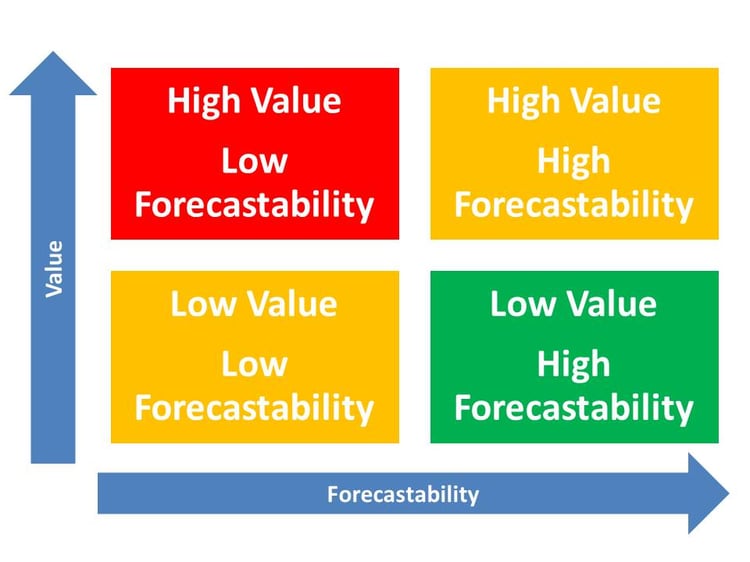About Forecastability

Forecastability is an important word in demand planning. Oddly, the word forecastability is not listed in the Merriam-Webster dictionary nor is it found in Wikipedia. However Wiktionary describes forecastability as “A measure of the degree to which something may be forecast with accuracy”. That something could be an item used in the production of a finished good or the finished good itself.
In healthcare that something could save a life. Prudent healthcare providers must ensure the availability of products that play a critical role in a hospital setting. This is good news for the patient. Unfortunately, the bad news is that the strategy for achieving desired fill rates ties up huge amounts of capital. In fact, there is so much overstock that a company called Hospital Overstock has made a business out of buying excess inventory from hospitals and clinics. Sadly a lot of inventory is lost, damaged, expired or becomes obsolete.
It is estimated that billions of dollars are unnecessarily tied up in inventory not just in healthcare but in inventories everywhere. Demand planning and forecasting is the answer to this problem. The demand planning process helps organizations achieve the right balance between service levels, inventory investment and operating costs. Ideally it is a collaborative process whose output is a shared operational forecast used in production, procurement, logistics and financial planning. The forecast numbers are then monitored for accuracy as plans will need to be adjusted should actual demand be significantly higher or lower than anticipated.
With hundreds of items to manage, it is essential for planners to rate their assigned items. Along with rating items based on their forecastability, planners must rate items based on their importance as well. What are the costs and/or consequences in the event of a shortage? High value or high impact items have a higher level of importance than low value or low impact items. More effort should be invested on important items with a low degree of forecastability and much less effort on items of lower importance and a high degree of forecastability.
Nobody can ever accurately predict the future yet planning for the future is essential. When conditions remain unchanged, the future demand for an item will probably be very similar to its past demand. However nothing stays the same for long in today’s world therefore both the importance and forecastability of an item must be periodically reassessed.
A famous American author wrote “No sensible decision can be made any longer without taking into account not only the world as it is, but the world as it will be.” Never have these words been more relevant.


